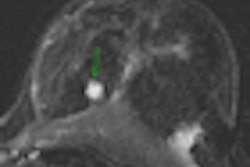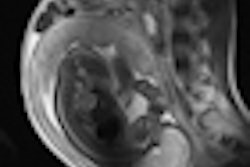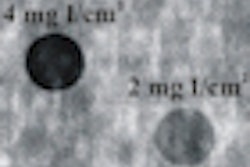Performing reviews of interval and screen-detected breast cancers can improve screening practice, and decrease the amount of missed cancers, according to a study published in the April issue of Academic Radiology.
Dr. Solveig Roth Hoff of Alesund Hospital in Alesund, Norway, and colleagues compared the distribution of mammographic features on prior screening mammograms of missed interval and screen-detected cancers to the distribution on diagnostic mammograms of screen-detected cancers. They found a substantial percentage of both interval and screen-detected cancers were classified as missed (Academic Radiology, April 2011, Volume 18:4, pp. 454-460).
The study was based on breast cancer diagnosed in women age 50 to 71 who participated in an organized, biennial mammography screening program. Hoff's team included a total of 81 interval cancers diagnosed in prevalently and subsequently screened women (between April 2002 and June 2006), and 123 screen-detected cancers diagnosed in subsequently screened women (between August 2004 and June 2008).
Twenty-four of the 81 interval cancers, or 29.6%, were classified as missed. Twenty-six of the 123 screen-detected cancers, or 21.1%, were classified as missed.
Calcifications are part of the challenge of interpreting screening mammograms, according to Hoff. Calcifications alone, or in association with a mass or asymmetry, was the presenting feature in 34% of the prior mammograms of missed cancers, compared with 21.1% of the diagnostic mammograms of screen-detected cancers.
"Three in 10 interval cancers, and two in 10 screen-detected cancers, showed signs on prior mammograms that in a retrospective review should have led to recall examinations," Hoff wrote. "It is important to be aware that the missed cancers are not necessarily overlooked but could be misinterpreted. A lesion might be perceived, but considered not suspicious for malignancy. The difficulty of deciding whether to recall or not ... is an inevitable challenge of mammographic screening."
Hoff's team emphasized that conducting definitive reviews -- of both prior and diagnostic mammograms -- contributes to an effective screening program: Definitive reviews result in a higher proportion of missed cancers than reviews in which screening mammograms of cancers are mixed with normal mammograms to mimic a normal screening setting, according to Hoff.
"Minimal signs, not significant for recall in a retrospective view, represented 32% of the interval, and 37% of the screen-detected cancers," Hoff wrote. "This reflects that unspecific signs of a later-presenting malignancy might be present for one or even several screening examinations before the tumor is likely to be detected."
The importance of reviewing both interval and screen-detected cancers is obvious, according to Hoff.
"Performing reviews in accordance with standardized guidelines would make it possible to compare the results across screening programs and establish recommendations for improved screening practice," Hoff wrote.




















